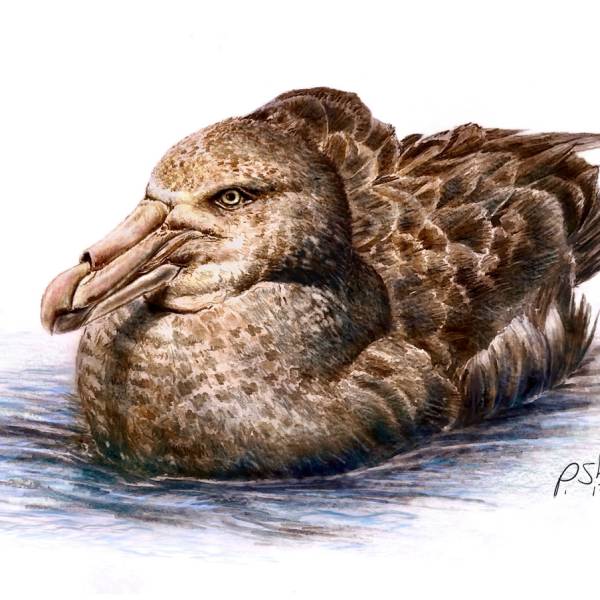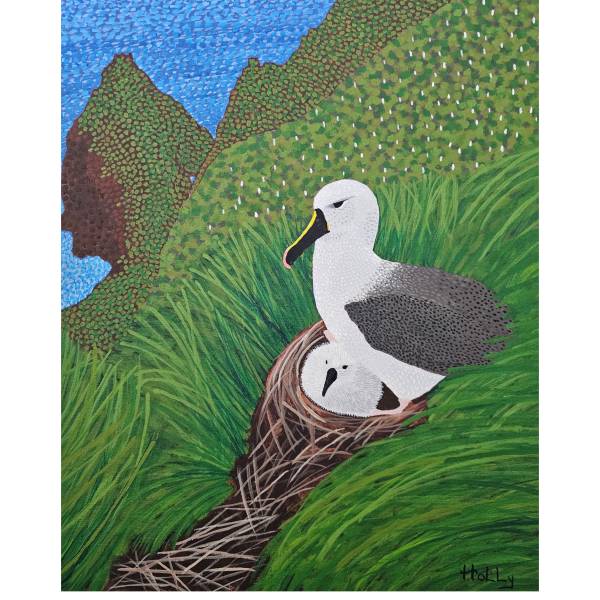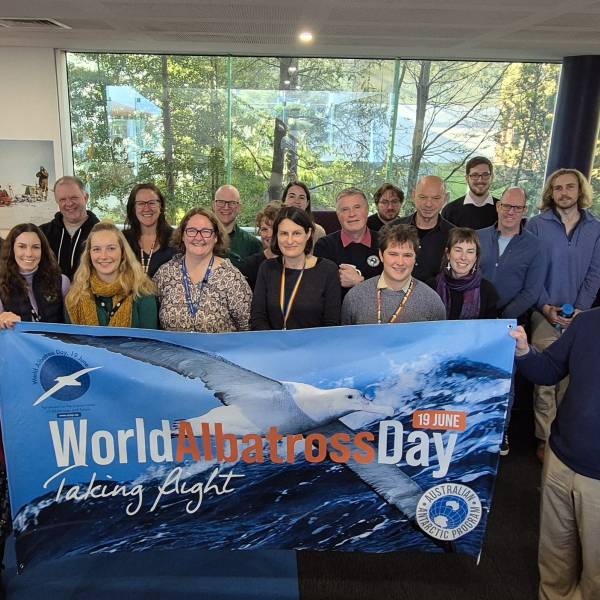The Pointe Géologie archipelago is located in Terre Adélie, five kilometres off the mainland of western Antarctica, in front of the Astrolabe Glacier. This remote place is home to the French scientific station of Dumont D’Urville. Composed of five major islands for which the total surface does not exceed 2 km², the archipelago and the sea-ice around it represent an important breeding site for eight bird species. One of these is the ACAP-listed Southern Giant Petrel Macronectes giganteus. Each year about 20 pairs are observed at the beginning of the breeding season on a small island less than one kilometre from the station.
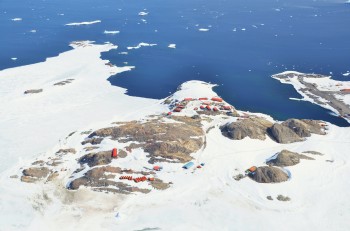
The French station Dumont D’Urville, during summer. Photograph by Agnès Lewden
Due to the proximity of a well-studied Emperor Penguin Aptenodytes forsteri colony of roughly 3000 pairs, Southern Giant Petrels in Terre Adélie are present all year round save for a short period during mid-winter. The giant petrels return during June to prey upon on chicks in the Emperor Penguin colony, which represent an energetic cost-efficient food source during their key periods of pre-laying and incubation.
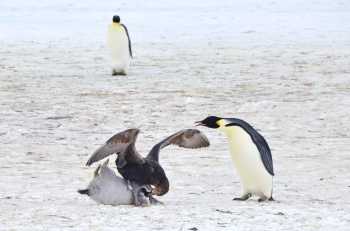
A Southern Giant Petrel preys upon an Emperor Penguin chick in mid-October
Photograph by Agnès Lewden
For more than 55 years, the giant petrel population has been monitored annually by biologists of the Chizé Biological Centre (CEBC-CNRS) as part of a long-term scientific research programme of the French Polar Institute Paul-Emile Victor (IPEV). Because the Southern Giant Petrels are very sensitive to human disturbance, the population is monitored all year-round from a distance and out of sight of the birds, to avoid disturbance to incubating and brooding adults. Adults have not banded since 1996; only fledging chicks are banded at the end of the breeding season when almost all the adults have left the colony.
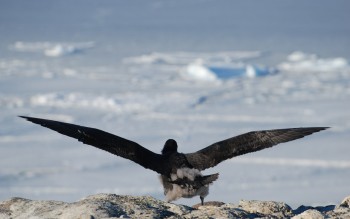
Southern Giant Petrel fledgling. Photograph by Sophie De Grissac
In 1957, the Southern Giant Petrel colony contained 69 fledglings on the main island of Ile des Pétrels, where a small base had been established. A few years later, with the extension of the station and construction of an helicopter landing zone right next to the breeding site, the population started to decrease and some pairs colonized a new island, Ile Rostand, where the remaining adults have progressively moved to breed, with today 20 pairs fledging 18 birds in 2012. The initial colony has all but disappeared with only two chicks left in 1999 and no chicks at all between 2000 and 2011. Thus, the size of the Terre Adélie Southern Giant Petrel population has declined by 74 % from 1957 to 2012. However, in the three last years, a single breeding pair has been observed at the original breeding site, although a chick fledged only in 2011.
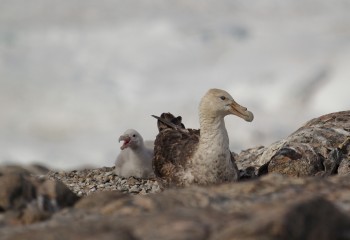
A Southern Giant Petrel on the nest with an approximately two-week old chick
Photograph by Christophe Sauser
Human disturbance has had a major important impact on the Southern Giant Petrel population of Terre Adélie, as has been reported for other Antarctic colonies within the Australian Antarctic Territory and on King George Island, South Shetland Islands off the Antarctic Peninsula. Furthermore, as shown for other Antarctic species breeding in Terre Adélie such as Emperor and Adélie Pygoscelis adeliae Penguins, Snow Petrel Pagodroma nivea and Antarctic Fulmar Fulmarus glacialoides, climate change and sea-ice extent variability could also be impacting the population of Southern Giant Petrels.
In 1995, the Pointe Géologie Archipelago was designated by the Antarctic Treaty Consultative Meeting (ATCM) as an Antarctic Specially Protected Area (ASPA No. 120). With this status, the islands where the giant petrels breed may only be visited for scientific purposes.
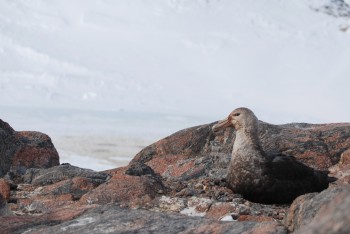
Southern Giant Petrel breeding in Terre Adélie
Photograph by Sophie De Grissac
Selected References:
Chupin, I. 1997. Human impact and breeding success in Southern Giant Petrel Macronectes giganteus on King George Island (South Shetland Islands). Korean Journal of Polar Research 8: 113-116.
Micol, T. & Jouventin, P. 2001. Long-term population trends in seven Antarctic seabirds at Pointe Géologie (Terre Adélie). Human impact compared with environmental change. Polar Biology 24: 175-185.
Patterson, D.L., Woehler, E.J., Croxall, J.P., Cooper, J., Poncet, S., Peter, H.-U., Hunter, S. & Fraser, W.R. 2008. Breeding distribution and population status of the Northern Giant Petrel Macronectes halli and Southern Giant Petrel M. giganteus. Marine Ornithology 36: 115-124.
Prévost, J. 1963. Densités de peuplement et biomasses des vertebras terrestres de l’Archipel de Pointe Géologie. Terre Vie 17: 35-49.
Agnès Lewden & Sophie De Grissac, Centre d'Etudes Biologiques de Chizé, Villiers-en-Bois, Beauvoir-sur-Niort, France, 21 September 2013

 English
English  Français
Français  Español
Español 

